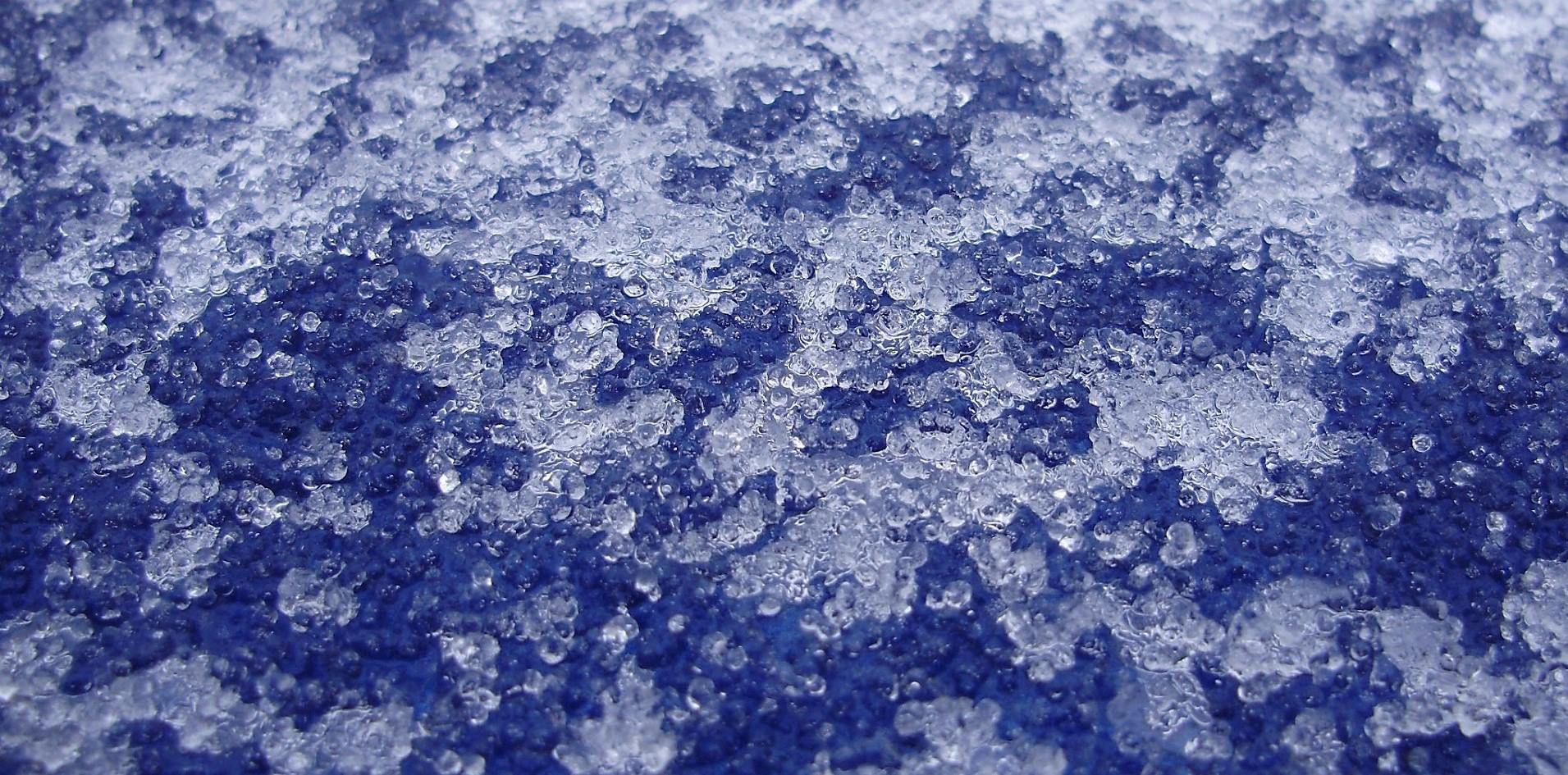
Sleet is an intriguing weather phenomenon that often catches us by surprise. It occurs when raindrops fall through a layer of freezing air and become supercooled, forming ice pellets before reaching the ground. Sleet is different from hail, as hailstones are formed through a different process. This interesting mixture of rain and ice pellets has fascinated scientists and weather enthusiasts alike for centuries.
In this article, we will delve into 19 fascinating facts about sleet. From its formation and characteristics to its impact on the environment and safety precautions, we will explore the many aspects of this unique weather phenomenon. So, brace yourself for an educational journey that will leave you with a deeper understanding of the frozen precipitation that is sleet.
Key Takeaways:
- Sleet is a winter weather phenomenon that can make surfaces slippery, cause power outages, and create a beautiful winter scene. It’s important for weather forecasting and can impact transportation and agriculture.
- Sleet is different from freezing rain and can be noisy as it falls. It’s more common in colder regions and can affect visibility and create hazardous road conditions. Understanding sleet helps communities prepare for potential hazards and make informed decisions.
Sleet is a form of precipitation.
Sleet is a type of precipitation that falls from the sky in the form of small ice pellets. It occurs when snowflakes partially melt as they fall through a layer of warmer air and then refreeze as they pass through a layer of subfreezing air near the surface of the Earth.
Sleet is often associated with winter weather.
Sleet commonly occurs during the colder months when the temperature is near or slightly above freezing. It can be a result of a mix of warm and cold air masses colliding, creating the perfect conditions for sleet to form.
Sleet is different from freezing rain.
While sleet consists of small ice pellets, freezing rain falls as liquid raindrops that instantly freeze upon contact with cold surfaces, forming a layer of ice. Sleet doesn’t typically accumulate to the same extent as freezing rain.
Sleet can make surfaces slippery.
When sleet accumulates on the ground, it can create hazardous conditions, making roads and sidewalks slippery. This can lead to reduced traction and an increased risk of accidents.
Sleet can cause power outages.
During sleet storms, the weight of the ice pellets can accumulate on power lines and tree branches, causing them to sag or break. This can result in disruptions to power supply and potentially lead to power outages.
Sleet is often accompanied by other wintry precipitation.
Sleet is commonly seen alongside other types of wintry precipitation, such as snow and freezing rain. These weather conditions often occur within a close timeframe, creating a mix of different types of frozen precipitation.
Sleet can be noisy.
When sleet falls, it can create a unique sound as the ice pellets hit surfaces such as windows, roofs, and cars. This can be described as a tinkling or pinging sound.
Sleet can be damaging to crops.
When sleet occurs during the growing season, it can damage or destroy crops. The weight of the ice pellets can break stems and branches and potentially ruin entire harvests.
Sleet is more common in certain regions.
Sleet is more prevalent in regions with colder climates, particularly in areas that experience regular snowfall. It is less common in warmer regions where the temperature rarely dips below freezing.
Sleet can affect transportation.
During sleet storms, transportation can be significantly impacted. Road conditions deteriorate, flight delays and cancellations occur, and public transportation services may be disrupted as a result of the hazardous weather conditions.
Sleet can have different forms and sizes.
Sleet can come in various forms, ranging from small ice pellets to larger, more irregularly shaped pieces of ice. The size and shape of the sleet depend on factors such as atmospheric conditions and how the snowflakes melt and refreeze.
Sleet is often associated with gray skies.
Before and during a sleet event, the skies typically appear overcast and gray. This is due to the presence of thick cloud layers associated with the storm system that is producing sleet.
Sleet can provide valuable water resources.
While sleet may not be as beneficial as snow or rain in terms of water supply, it still contributes to the overall precipitation that sustains ecosystems and provides water for human consumption.
Sleet is more dense than snow.
Compared to snowflakes, sleet particles are denser and have a higher water content. This density gives sleet its characteristic properties, such as its ability to bounce off surfaces upon impact.
Sleet can cause visibility issues.
During a sleet event, visibility can be reduced due to the presence of falling ice pellets. Combined with other wintry conditions, this can make it challenging to navigate and drive safely.
Sleet can accumulate on vehicles.
When sleet falls, it can accumulate on the surfaces of vehicles, covering windshields, windows, and rooftops. This requires drivers to clear the ice pellets before driving for improved visibility and safety.
Sleet can create a picturesque winter scene.
Despite its potential hazards, sleet can transform landscapes into a beautiful winter wonderland. The layer of ice pellets coating trees, grass, and other objects can create a stunning and ethereal sight.
Sleet is a phenomenon with a rich history in folklore and literature.
Sleet has been featured in various works of literature and has often been associated with symbolism related to the harshness of winter, perseverance, and the unpredictability of nature.
Understanding sleet is important for weather forecasting.
Meteorologists analyze sleet patterns and conditions to accurately predict and forecast weather events. This information helps communities prepare for potential hazards and make informed decisions.
Conclusion
In conclusion, sleet is a fascinating natural phenomenon that occurs when raindrops pass through a layer of freezing air near the ground and freeze into ice pellets before reaching the surface. It can create slippery and hazardous conditions, making it important to take precautions while driving or walking during sleet events.
Sleet is often confused with freezing rain, but they differ in the way the precipitation freezes. Freezing rain freezes upon contact with cold surfaces, creating a glaze of ice. On the other hand, sleet freezes in mid-air before reaching the ground, resulting in ice pellets.
By understanding the nature of sleet and its formation process, we can appreciate the beauty of this icy phenomenon while also being aware of its potential risks.
FAQs
Q: How does sleet differ from snow?
A: Sleet and snow both involve frozen precipitation, but they form under different conditions. Sleet occurs when raindrops freeze into ice pellets before reaching the surface, while snow forms when ice crystals combine in the atmosphere and fall to the ground as fluffy flakes.
Q: Is sleet dangerous?
A: Sleet can create hazardous conditions, especially when it accumulates on roadways and walkways. The ice pellets can make surfaces slippery and increase the risk of accidents. It’s important to exercise caution when driving or walking during sleet events.
Q: Can sleet damage property?
A: Sleet can potentially cause damage to trees, power lines, and other structures. The weight of the ice pellets can accumulate and lead to the bending or breaking of branches. Additionally, sleet can cause power outages if it accumulates on power lines and causes them to sag or snap.
Q: Is sleet a common occurrence?
A: The frequency of sleet events varies depending on the geographical location and climate. Sleet is more commonly observed in regions with colder climates where freezing air masses can interact with warm, moist air masses.
Q: Can sleet be predicted?
A: Meteorologists rely on weather models, radar observations, and surface temperature data to predict the likelihood of sleet. However, predicting the exact timing and location of sleet can still be challenging due to the complex nature of atmospheric conditions.
Was this page helpful?
Our commitment to delivering trustworthy and engaging content is at the heart of what we do. Each fact on our site is contributed by real users like you, bringing a wealth of diverse insights and information. To ensure the highest standards of accuracy and reliability, our dedicated editors meticulously review each submission. This process guarantees that the facts we share are not only fascinating but also credible. Trust in our commitment to quality and authenticity as you explore and learn with us.


